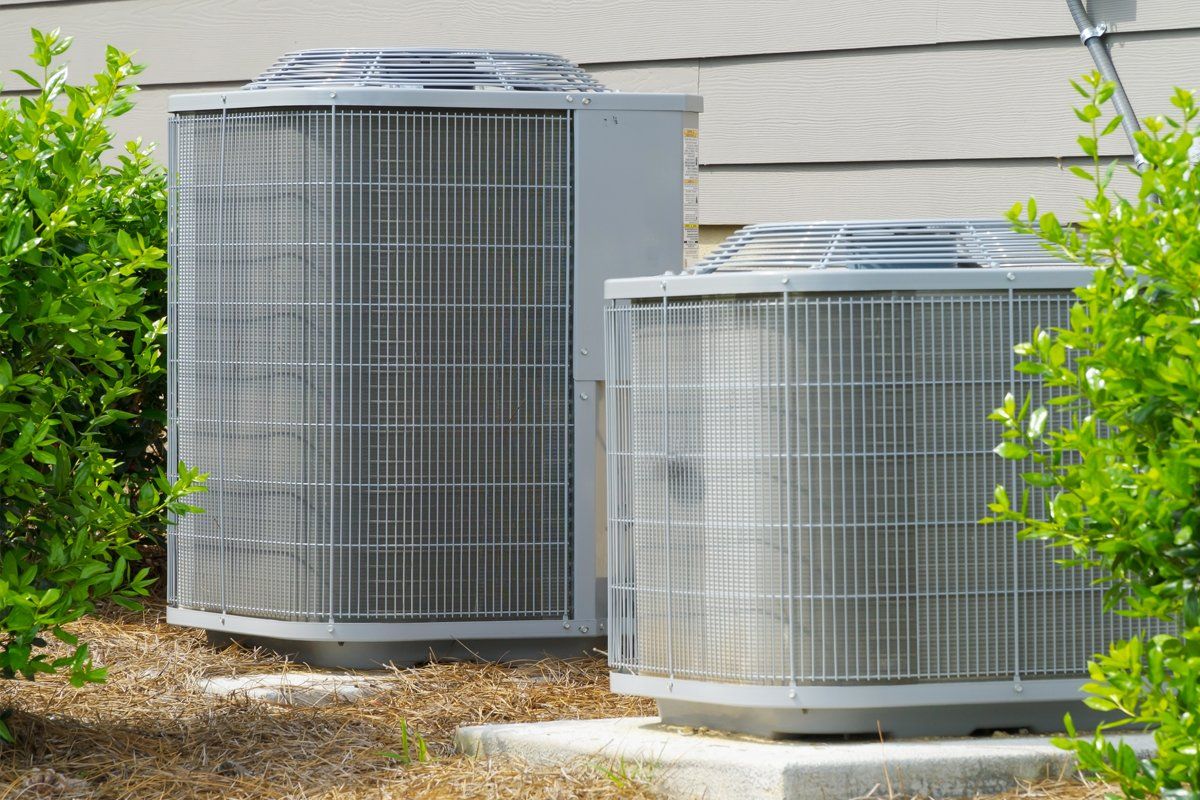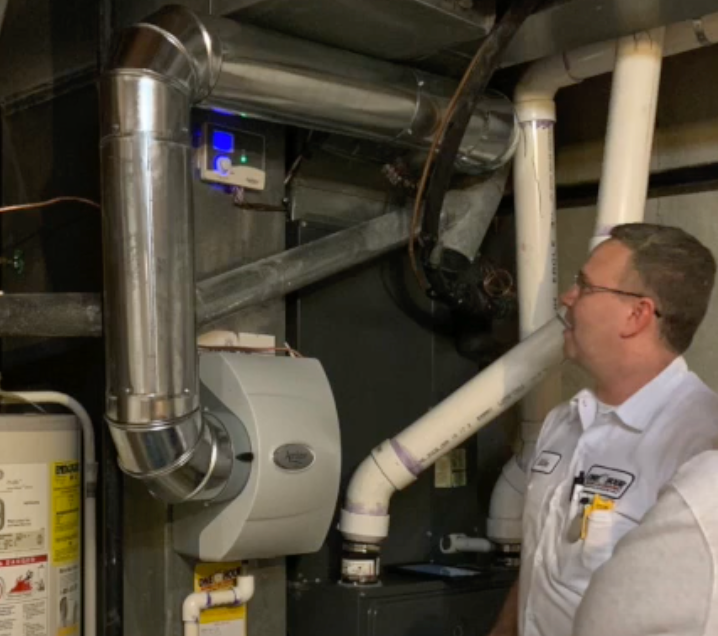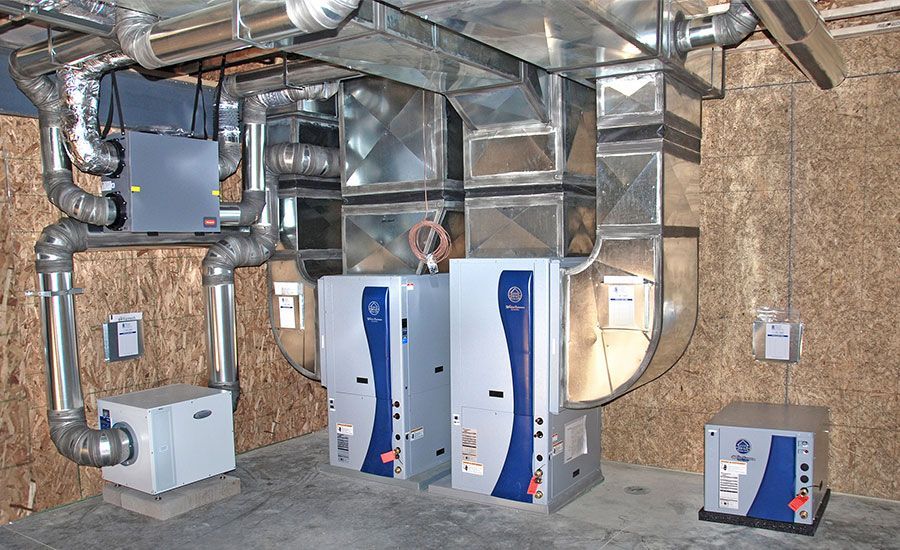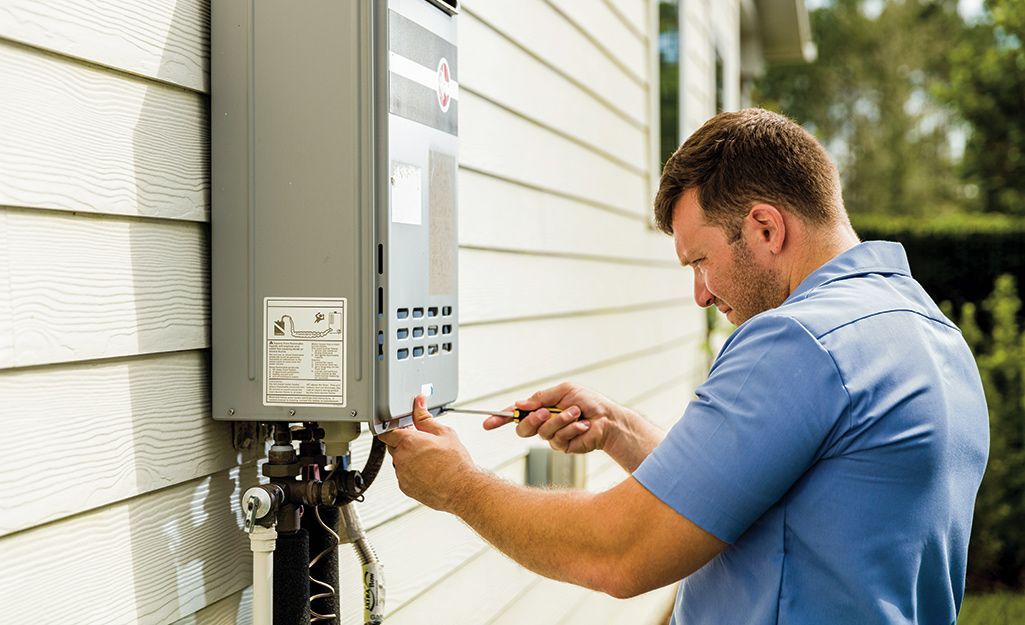HVAC Packaged Unit vs. Split System

Most homes across the country are equipped with some type of HVAC system. While the basic premise of these units is the same—to provide indoor comfort—many of them perform differently.
When it comes to indoor comfort systems, there are several different types to choose from. Each of these units has its own set of pros and cons, including different price points.
Today, two of the most common HVAC systems are a packaged unit and an HVAC split system. In this post, we’ll discuss the differences between these comfort systems, including their benefits and disadvantages.
What is an HVAC packaged unit?
An HVAC packaged unit is different from a split air conditioner in that all parts of the system are located in one place. In fact, all system components are usually found in a single metal cabinet. These units are a great way to save space, and they also include advanced technology that stays working effectively for years.
The typical HVAC packaged unit includes a condenser, evaporator coil, and compressor. While other system types have some of these components inside the home, a package unit saves space by having everything located outside. These units are usually found on the side of the house or even on the roof. Packaged systems are discreet, compact, and super convenient!
Once installed, a package unit uses special air ducts that connect to various areas of your home. This is how the comfortable air is pushed through the space. While most of the system’s parts can be found outdoors, the unit is controlled inside via the thermostat.
A packaged HVAC system has all the typical components of most comfort systems out there, but everything is located in one centralized area. And while many of these units are mainly focused on producing cold air, some of these systems include electric heating coils or even a gas furnace.
What is a split air conditioning system?
Have you always wondered, “what is a split system air conditioner?”
An HVAC split system involves the same components as a packaged unit; only the components are found in different areas. For instance, the compressor and condenser are typically located outdoors, while the air handler and evaporator coil are inside. The air handler helps to push the conditioned air through the ductwork. A split unit AC system can only be used if you have enough space for these indoor components.
Another essential piece to the unit involves the connection of the indoor unit to the outdoor unit. These components are connected by a series of electrical wires and gas pipes, which all help to produce cold air for the house.
Key differences to consider
While it’s obvious to see the major differences between a packaged system and an HVAC split unit, each of them have their own set of pros and cons.
Here is how they differ:
Maintenance
Preventative maintenance is essential for any HVAC system. However, the typical maintenance tasks differ from one system type to the next. If you own a split system air conditioning unit, inspecting the entire system can take some time. That’s because the unit has components both indoors and outdoors. This includes the air handler, which is often found in the basement or attic. However, this is more common in older homes; modern residences usually have system components that are easier to find.
While it can be more difficult to maintain a split unit HVAC system, its parts are better protected from the elements. As packaged systems contain all system parts in one place, they are easier to maintain. However, since everything is located outdoors, the weather can sometimes play a role. These units are more prone to excessive wear and tear, including weather damage.
As it can be easier to access a packaged unit, the maintenance tasks can still be a challenge. Since some systems are found on the roof, climbing up to the unit and taking a look can be dangerous and difficult.
No matter what system is located outside, it’s always best to keep it free of leaves, dirt, and other debris. This can not only keep system issues to a minimum, but it can also speed up the maintenance process.
Installation
When comparing a packaged unit with a split HVAC system, the installation is a huge difference to consider. Given how a packaged unit has its major system parts in one area, the installation is quick, easy, and straightforward. But when you’re installing a split system HVAC unit, this will usually take much longer.
That's because a split system requires the installation of both the indoor and outdoor components. The gas pipes and wiring also have to be installed, which adds to the level of difficulty and installation time.
Space
The space needed for these systems is another factor to consider. As a packaged unit includes all system components outside the home, this means the unit doesn’t take up any room indoors—except for the air ducts and thermostat, which are basically hidden.
When we look at a split air conditioner, you’ll need more space to fit everything. Not only is there an outdoor unit, but you’ll also need room inside the home for the other parts. Since these can sometimes be bulky, it’s important to make sure you have adequate space. If you own a smaller home or a large residence with several occupants, you may consider a packaged unit. However, as split systems are getting more advanced and compact, some can fit in tighter spaces.
Sound
If you can't stand a loud HVAC system, you may want to choose a packaged unit. As split systems involve indoor components, homeowners sometimes experience loud noises coming from the system. Additionally, this sound can be more annoying if the system is malfunctioning.
Since packaged units have everything located outdoors, the noise is never really an issue. If the noise is loud enough to be heard indoors, then you might have a system problem. But if your unit is working as it should, the sound shouldn’t be loud enough to be heard indoors. You may hear the air being pushed through the ductwork, but it shouldn’t cause annoyance. But if you ever hear any screeching, whistling, or banging, there could be a ductwork issue. Be sure to call a professional if you hear any of these sounds.
Final thoughts
Whether you choose an HVAC split unit or a packaged system, you can experience a comfortable home for many years to come. While both of these systems work great, one may be better suited for your needs. Make sure to read this post before making a purchase decision!
Homeowner Looking For Reliable Heating, Cooling Or Plumbing Supplies?
Our dedicated specialists are standing by to help.
Most homeowners in need of new heating or cooling equipment will do an internet search to get information. Such a search will typically yield two results: what to buy or where to buy but not why to buy. At InterCounty Supply, as a wholesale supply house, we present all the options for what to buy and why it would be the best choice for YOUR situation. After all the options are presented a homeowner can decide for themselves what they need. ICS then has a licensed, factory trained contractor who SPECIALIZES in the equipment you need come to your home to provide the complete installation cost for the equipment you need. ICS will also handle all the paperwork for any rebates that are applicable.
Have questions, give us a call 914-939-4350 or fill out the form and one of our specialists will be in touch shortly.
Get A Free - No Obligation Quote
Our Specialist are
standing by to help
Blog Post Form
We will get back to you as soon as possible
Please try again later
Other Helpful Articles
Homeowner Looking For Reliable Heating, Cooling Or Plumbing Supplies?
Our dedicated specialists are standing by to help.
Quick Links
Sign Up For Our News Blast
Email Newsletter
Thank you for subscribing to our updates. We will never spam or resell your information.
Please try again later.
Latest News
All Rights Reserved. All content & images belong to their respectful owners. | InterCounty Supply Inc.
Powered by Zamerat Digital Marketing




